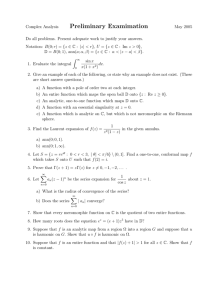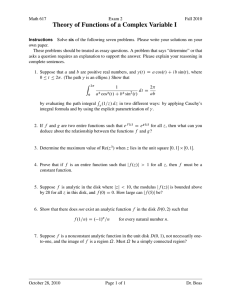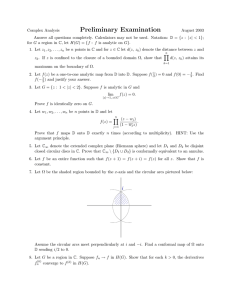Mathematics 440/508 – Final Examination, April 17, 1997 Instructions
advertisement
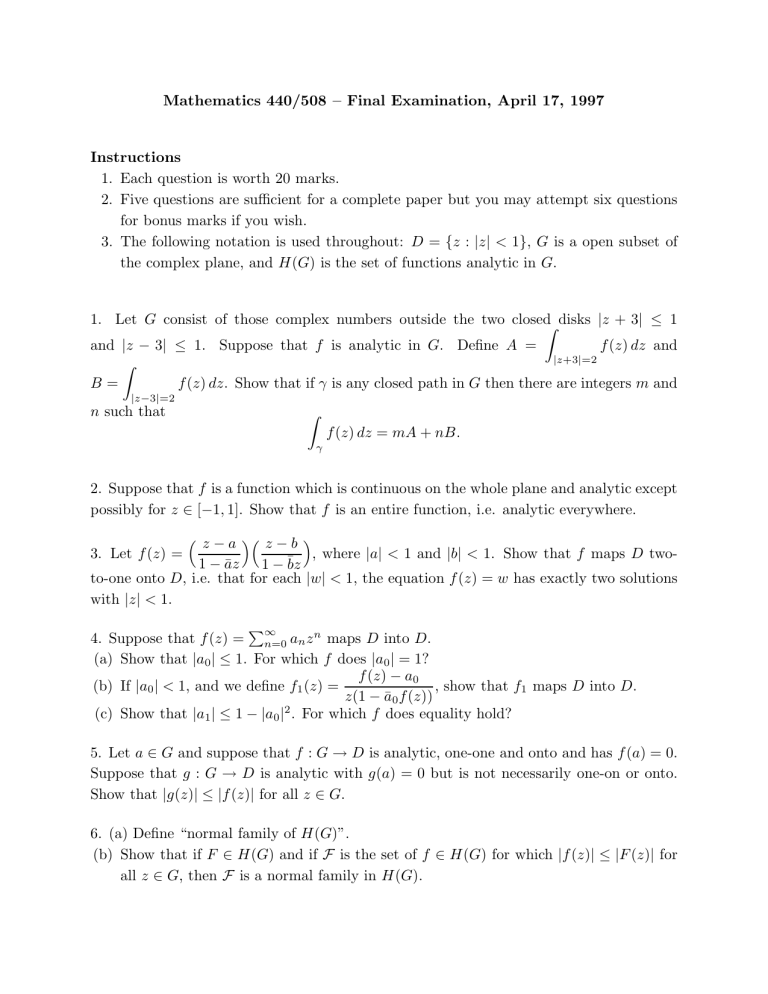
Mathematics 440/508 – Final Examination, April 17, 1997
Instructions
1. Each question is worth 20 marks.
2. Five questions are sufficient for a complete paper but you may attempt six questions
for bonus marks if you wish.
3. The following notation is used throughout: D = {z : |z| < 1}, G is a open subset of
the complex plane, and H(G) is the set of functions analytic in G.
1. Let G consist of those complex numbers outside the two closedZ disks |z + 3| ≤ 1
and |z − 3| ≤ 1. Suppose that f is analytic in G. Define A =
f (z) dz and
|z+3|=2
Z
B=
f (z) dz. Show that if γ is any closed path in G then there are integers m and
|z−3|=2
n such that
Z
f (z) dz = mA + nB.
γ
2. Suppose that f is a function which is continuous on the whole plane and analytic except
possibly for z ∈ [−1, 1]. Show that f is an entire function, i.e. analytic everywhere.
z − a z − b 3. Let f (z) =
, where |a| < 1 and |b| < 1. Show that f maps D two1 − āz 1 − b̄z
to-one onto D, i.e. that for each |w| < 1, the equation f (z) = w has exactly two solutions
with |z| < 1.
P∞
4. Suppose that f (z) = n=0 an z n maps D into D.
(a) Show that |a0 | ≤ 1. For which f does |a0 | = 1?
f (z) − a0
(b) If |a0 | < 1, and we define f1 (z) =
, show that f1 maps D into D.
z(1 − ā0 f (z))
(c) Show that |a1 | ≤ 1 − |a0 |2 . For which f does equality hold?
5. Let a ∈ G and suppose that f : G → D is analytic, one-one and onto and has f (a) = 0.
Suppose that g : G → D is analytic with g(a) = 0 but is not necessarily one-on or onto.
Show that |g(z)| ≤ |f (z)| for all z ∈ G.
6. (a) Define “normal family of H(G)”.
(b) Show that if F ∈ H(G) and if F is the set of f ∈ H(G) for which |f (z)| ≤ |F (z)| for
all z ∈ G, then F is a normal family in H(G).

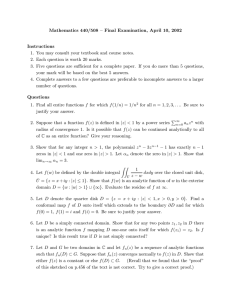

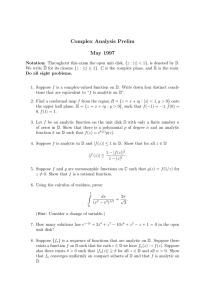

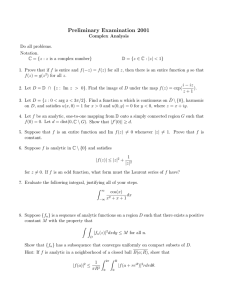
![4,0]. x dx Preliminary Examination](http://s2.studylib.net/store/data/010419417_1-35144038700a9774266d9cf65b7ec7f4-300x300.png)

